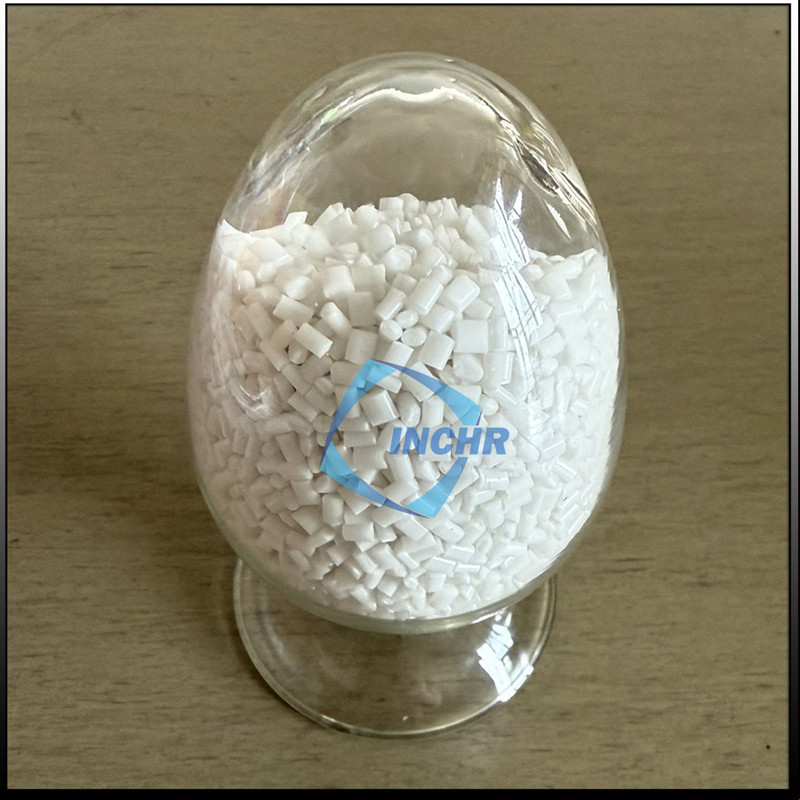Introduction: The Critical Role of Anti Block Masterbatch
In the competitive landscape of plastic manufacturing, anti block masterbatch has become indispensable for producing high-quality films. This additive prevents layers from sticking together during processing, storage, and transportation—ensuring efficiency, reducing waste, and maintaining product integrity. From food packaging to industrial sheeting, its applications are vast and transformative.
How Anti Block Technology Works: Science Meets Precision
Anti block masterbatch incorporates fine particles (e.g., silica, talc, or synthetic materials) into polymer resins. These particles create microscopic surface roughness through three mechanisms:
Surface Texturing: Generates controlled irregularities to prevent adhesion.
Friction Management: Lowers the coefficient of friction (COF) for smoother processing.
Optical Clarity Preservation: Minimizes haze in transparent films.

Technical Specifications:
Particle Size: 1–8 µm (smaller for ultra-thin films, larger for heavy-duty applications).
Loading Rate: 1–5% by weight, depending on resin type (LDPE, PP, PLA).
Thermal Resistance: Stable at extrusion temperatures up to 260°C.
Top 5 Industries Transformed by Anti Block Masterbatch
1. Food & Beverage Packaging
Prevents vacuum-sealed films from sticking, reducing production waste by 20–30%.
Complies with FDA, EU 10/2011, and GB 9685 food-contact standards.
2. Agricultural Films
Ensures greenhouse films remain separated while maximizing UV light diffusion.
UV-stabilized grades extend durability by 2–3 years.
3. Medical Packaging
Maintains sterility in IV bags and pharmaceutical blister packs.
Passes ISO 10993-5 cytotoxicity and USP Class VI tests.
4. Industrial Stretch Films
Optimizes pallet-wrapping efficiency with tailored COF (0.3–0.5).
5. Sustainable & Biodegradable Films
Supports compostable resins (PLA/PBAT) and PCR (post-consumer recycled) materials.
Choosing the Right Anti Block Masterbatch: A 5-Step Guide
Resin Compatibility
Match the masterbatch to your base polymer (e.g., PP for rigid films, LLDPE for stretch films).
Particle Engineering
Spherical silica ensures clarity; talc offers cost efficiency for opaque films.
Certifications
Verify food-grade compliance (FDA, EU) or industrial-grade specifications.
Sustainability Alignment
Opt for bio-based silica or PCR-compatible formulas to meet ESG goals.
Supplier Collaboration
Partner with providers offering technical support and custom trials.
Sustainable Innovations: Pioneering Eco-Friendly Solutions
The industry is shifting toward greener alternatives without compromising performance:
Bio-Silica from Agricultural Waste: Rice husk ash and wheat straw reduce reliance on mined silica by 50%.
Chemical Recycling Compatibility: Additives designed to survive multiple recycling cycles.
Low-Migration Formulas: Minimize leaching to meet EU’s PPWR and U.S. EPA guidelines.
Case Study: A Thai manufacturer achieved 100% compostable packaging using rice husk-based anti-block agents, cutting carbon emissions by 45%.
Avoiding Common Pitfalls: 3 Costly Mistakes
Overloading Additives
Excess particles (>5%) increase haze and reduce tensile strength.
Poor Storage Practices
Moisture absorption degrades performance—store at <50% relative humidity.
One-Size-Fits-All Approach
Cast films require larger particles vs. blown films.
Future Trends: AI, IoT, and Smart Manufacturing
AI-Driven Dispersion Systems
Machine learning optimizes particle distribution in real time, reducing defects by 40%.
IoT-Enabled Production Lines
Sensors adjust masterbatch dosing based on resin viscosity and temperature.
Self-Adjusting Additives
Particles that adapt surface texture to environmental conditions (e.g., humidity, temperature).
FAQs: Addressing Key Industry Questions
Q: Can anti block masterbatch replace slip agents?
A: Hybrid grades reduce COF effectively, but ultra-low friction (<0.2) requires specialized slip additives.
Q: How does film thickness impact anti-block performance?
A: Films <15µm require nano-silica (1–3µm particles); thicker films (>30µm) use talc blends.
Q: What’s the ROI of premium anti block masterbatches?
A: Manufacturers report 20–35% waste reduction and 15% faster line speeds, with ROI in <6 months.
Why Partnering with Experts Matters
Leading suppliers offer:
Custom Formulations: Tailored to your resin, equipment, and end-use requirements.
Regulatory Compliance Support: Navigate FDA, REACH, and global sustainability standards.
R&D Collaboration: Co-develop innovations like bio-based or multi-functional additives.
Conclusion: Elevate Your Production with Anti Block Masterbatch
Anti block masterbatch is a strategic enabler for manufacturers seeking efficiency, sustainability, and superior product quality. By embracing advanced formulations and emerging technologies like AI and IoT, businesses can stay ahead in a competitive market. Partner with suppliers committed to innovation and measurable results to unlock the full potential of this transformative additive.




